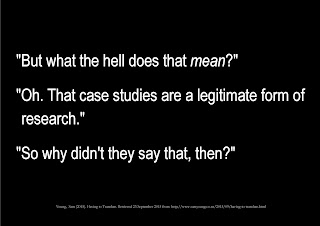I was marking a student's research proposal the other day, when I came across this sentence in their literature review: "In this research paper Jenny and Charles interview 24 students from 15 countries".
Treating this as a learning moment, I began to write some fairly normal feedback about academic conventions, saying "It is ‘normal’ to use surnames when we are writing up the views of experts. So we would say 'Lee and Rice'". But I stopped short at this point, because that was when I started thinking.
I started thinking because it suddenly occurred to me how jarring it is in New Zealand whenever we read, hear or use surnames instead of first names. It is completely NOT 'normal' for Kiwis to use surnames. In fact, the use of surnames borders on the overtly rude in Kiwi society.
Yet our academic writing and referencing in New Zealand has been almost entirely driven by what happens in the USA, and this reflection of academic culture has been adopted here without question, as it has been globally.
It is a very interesting aspect of what is 'normal' in academia, and not something that I had ever thought about before.
It sparked lots of questions for me. Should we continue to do this? Should we try to stop doing it? Is it necessary? If so, WHY is it necessary?
Something to think about.
Sam
read more "Academic Writing Conventions"
Treating this as a learning moment, I began to write some fairly normal feedback about academic conventions, saying "It is ‘normal’ to use surnames when we are writing up the views of experts. So we would say 'Lee and Rice'". But I stopped short at this point, because that was when I started thinking.
I started thinking because it suddenly occurred to me how jarring it is in New Zealand whenever we read, hear or use surnames instead of first names. It is completely NOT 'normal' for Kiwis to use surnames. In fact, the use of surnames borders on the overtly rude in Kiwi society.
Yet our academic writing and referencing in New Zealand has been almost entirely driven by what happens in the USA, and this reflection of academic culture has been adopted here without question, as it has been globally.
It is a very interesting aspect of what is 'normal' in academia, and not something that I had ever thought about before.
It sparked lots of questions for me. Should we continue to do this? Should we try to stop doing it? Is it necessary? If so, WHY is it necessary?
Something to think about.
Sam













